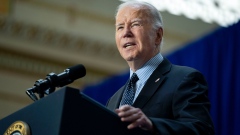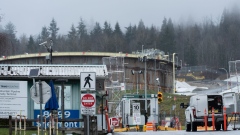Feb 7, 2022
Toronto's PATH no longer a ghost town as Bay Streeters return
, BNN Bloomberg
Toronto’s PATH no longer a 'ghost town' amid signs of revival
The pandemic-induced ghost town days of Toronto’s sprawling underground pedestrian path in the financial district are likely behind it and it’s now more of a matter of how long it takes to return to the walkway’s normal hustle and bustle, according to the executive director of the Toronto Financial District BIA.
“I think the most important thing is that many major organizations put plans in place to bring back significant cohorts of staff into their offices in January. And with Omicron, needless to say, that was pushed out. But the plans are in place, it's just a matter of the activation date,” Grant Humes said in an interview on Monday.
Toronto’s 30-kilometre long PATH features 3.7 million square feet of retail space and some 1,200 restaurants. It connects to six major downtown subway stations, including the city’s busiest transit hub, Union Station, as well as multiple hotels and entertainment destinations.
According to the City of Toronto’s website, sales in the PATH reach $1.7 billion annually, which generates $271 million in government tax revenue.
On a typical day, the PATH is filled with workers, tourists and shoppers, but that was brought to a screeching halt during the pandemic.
“There's been a fairly significant hit down here. I think some of the retailers were most likely having some issues prior to the pandemic - the entire world of retail changed, and that's been exasperated during the pandemic,” Humes said.
But the main message he wants to convey is that the walkway’s shops and restaurants have reopened for business.
“I think it's important for people coming back to understand that everything is here. The food courts are open, all the sit-down restaurants are open, the retailers are open so people are here to greet you when you come back,” he said.
“Some of the media narrative on the ghost town is clearly not that. I've been down here every day since this started. We had some real low points, quite honestly. But it's really starting to feel good again.”
A major source of customers for businesses inside the PATH have been the hundreds of thousands of workers that travel through the system during regular work hours.
There are some encouraging signs that at least some of those customers will soon return as the major Canadian banks prepare to bring their employees back to the office.
Bank of Montreal announced it will bring back some investment and corporate bankers starting Monday on a hybrid basis – the first of the big banks to concretely begin to refill its office tower.
Humes said he thinks the number of big corporations that activate their return-to-office plans will likely happen in quick succession, leading to an increase in travellers in the PATH.
However, with hybrid work models, a full recovery is still some ways off.
“[The pandemic] is clearly not something that's going to end with a bang. There is not going to be some great announcement that it’s over and everything becomes what it used to be,” he said.
“I think we're going to see a trajectory where things come back and all of a sudden, it's going to feel how it was before. And it’s going to take a little while to get there, but we're going to forget the quiet days like today very quickly I'm sure.”








